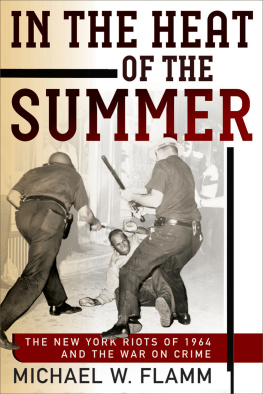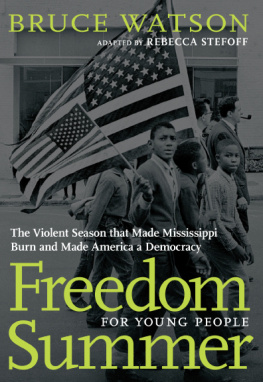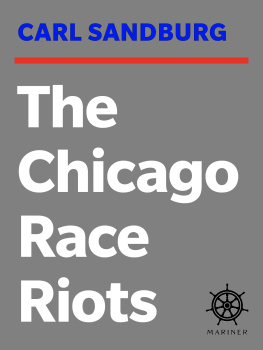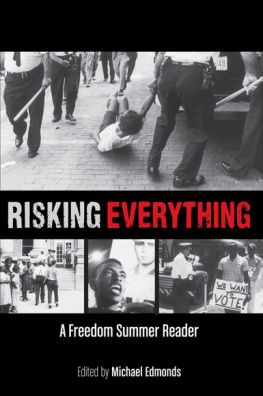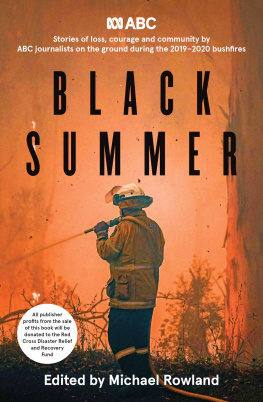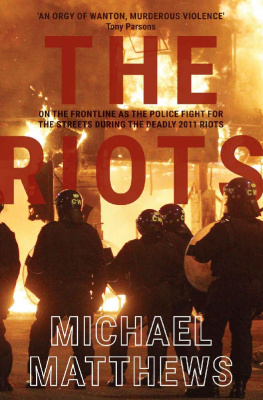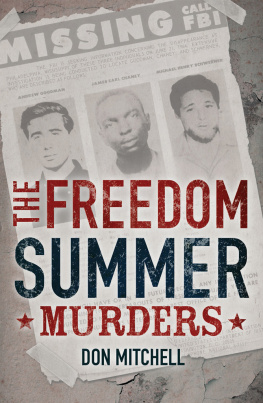Michael W. Flamm - In the Heat of the Summer: The New York Riots of 1964 and the War on Crime
Here you can read online Michael W. Flamm - In the Heat of the Summer: The New York Riots of 1964 and the War on Crime full text of the book (entire story) in english for free. Download pdf and epub, get meaning, cover and reviews about this ebook. City: Philadelphia, year: 2016, publisher: University of Pennsylvania Press, genre: History / Science. Description of the work, (preface) as well as reviews are available. Best literature library LitArk.com created for fans of good reading and offers a wide selection of genres:
Romance novel
Science fiction
Adventure
Detective
Science
History
Home and family
Prose
Art
Politics
Computer
Non-fiction
Religion
Business
Children
Humor
Choose a favorite category and find really read worthwhile books. Enjoy immersion in the world of imagination, feel the emotions of the characters or learn something new for yourself, make an fascinating discovery.
- Book:In the Heat of the Summer: The New York Riots of 1964 and the War on Crime
- Author:
- Publisher:University of Pennsylvania Press
- Genre:
- Year:2016
- City:Philadelphia
- Rating:5 / 5
- Favourites:Add to favourites
- Your mark:
In the Heat of the Summer: The New York Riots of 1964 and the War on Crime: summary, description and annotation
We offer to read an annotation, description, summary or preface (depends on what the author of the book "In the Heat of the Summer: The New York Riots of 1964 and the War on Crime" wrote himself). If you haven't found the necessary information about the book — write in the comments, we will try to find it.
On the morning of July 16, 1964, a white police officer in New York City shot and killed a black teenager, James Powell, across the street from the high school where he was attending summer classes. Two nights later, a peaceful demonstration in Central Harlem degenerated into violent protests. During the next week, thousands of rioters looted stores from Brooklyn to Rochester and pelted police with bottles and rocks. In the symbolic and historic heart of black America, the Harlem Riot of 1964, as most called it, highlighted a new dynamic in the racial politics of the nation. The first long, hot summer of the Sixties had arrived.
In this gripping narrative of a pivotal moment, Michael W. Flamm draws on personal interviews and delves into the archives to move briskly from the streets of New York, where black activists like Bayard Rustin tried in vain to restore peace, to the corridors of the White House, where President Lyndon Johnson struggled to contain the fallout from the crisis and defeat Republican challenger Barry Goldwater, who had made crime in the streets a centerpiece of his campaign. Recognizing the threat to his political future and the fragile alliance of black and white liberals, Johnson promised that the War on Poverty would address the root causes of urban disorder. A year later, he also launched the War on Crime, which widened the federal role in law enforcement and set the stage for the War on Drugs.
Today James Powell is forgotten amid the impassioned debates over the militarization of policing and the harmful impact of mass incarceration on minority communities. But his death was a catalyst for the riots in New York, which in turn foreshadowed future explosions and influenced the political climate for the crime and drug policies of recent decades. In the Heat of the Summer spotlights the extraordinary drama of a single week when peaceful protests and violent unrest intersected, the freedom struggle reached a crossroads, and the politics of law and order led to demands for a War on Crime.
Michael W. Flamm: author's other books
Who wrote In the Heat of the Summer: The New York Riots of 1964 and the War on Crime? Find out the surname, the name of the author of the book and a list of all author's works by series.

